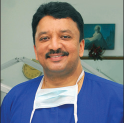Global oral health report – WHO

*Corresponding author: S. M. Balaji, Department of Oral and Maxillofacial Surgery, Balaji Dental and Craniofacial Hospital, Chennai, Tamil Nadu, India. smbalaji@gmail.com
-
Received: ,
Accepted: ,
How to cite this article: Balaji SM. Global oral health report – WHO. J Global Oral Health 2022;5:61-2.
This November saw the release of the World Health Organization’s (WHO) Global oral health status report.[1] The data for this study comes from the Global Burden of Disease project, the International Agency for Research on Cancer, and global WHO surveys. This year’s report is truly remarkable for it offers a complete picture of oral disease burden at the global and country levels. In addition, it also shows the directions, challenges, and opportunities to hasten progress towards universal health coverage that is related to oral health. The report is a very salient achievement for the creation of a valuable tool for mass mobilizing political action and garnering better, focused resources for oral health.
This report is subsequent to the World Health Assembly resolution WHA74.5 on oral health. This document would be an ideal tool for oral health policymakers and allied stakeholders across different sectors including dentists themselves. This could be used as a reference document for global, regional, and national contexts.[2]
Globally, approximately 3.5 billion people are afflicted by preventable oral diseases. Oral diseases have emerged as the most widespread non-communicable diseases. The other non-communicable diseases such as mental disorders, cardiovascular diseases, diabetes, chronic respiratory diseases, and cancers combined, are less by a billion people as compared to oral diseases. The report highlights that an estimated 2.5 billion people suffer from untreated dental caries (tooth decay) alone.[2]
The report underlines the impact and havoc that oral diseases cause on human health and well-being as well as highlights stark inequalities in oral health-care delivery.[3,4] The report underlines the fact that the higher oral disease burden is faced by the marginalized, vulnerable and disadvantaged population groups within and across societies, which have restricted access to oral health care. It is at this point honor societies such as the Academy of Dentistry International can pitch in to address the inequalities through providing oro-dental care to marginalized populations, empowering societies to enhance oral health-care delivery by developing sustainable dental care delivery models, and enriching dental education/training and skills. Furthermore, we can help to develop policies and work with stakeholders to alleviate the burden of oral diseases. We have been advocating the need for our members to voice and support actions for increased oral health-care delivery across the geo-political-social spectrum. The present WHO oral health burden report underlines the urgent need for action.
References
- Balaji: Global oral health report – WHO; Available from: https://www.who.int/news-room/events/detail/2022/11/18/default-calendar/launch-of-the-who-global-oral-health-status-report [Last accessed on 2022 Nov 22]
- WHO Team for NonCommunicable Diseases In: Global Oral Health Status Report: Towards Universal Health Coverage for Oral Health by 2030 (1st ed). Geneva: World Health Organization; 2022.
- [Google Scholar]
- Indian oral health inequalities. Indian J Dent Res. 2018;29:404.
- [CrossRef] [PubMed] [Google Scholar]
- Access to oral health-care and inequalities. J Global Oral Health. 2019;2:1-2.
- [CrossRef] [Google Scholar]





